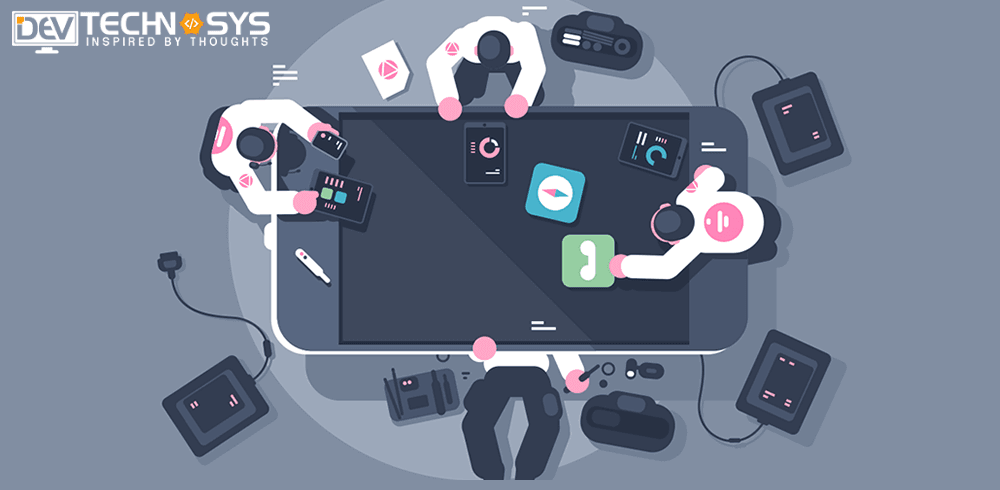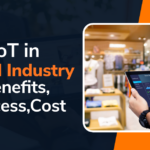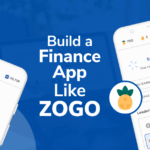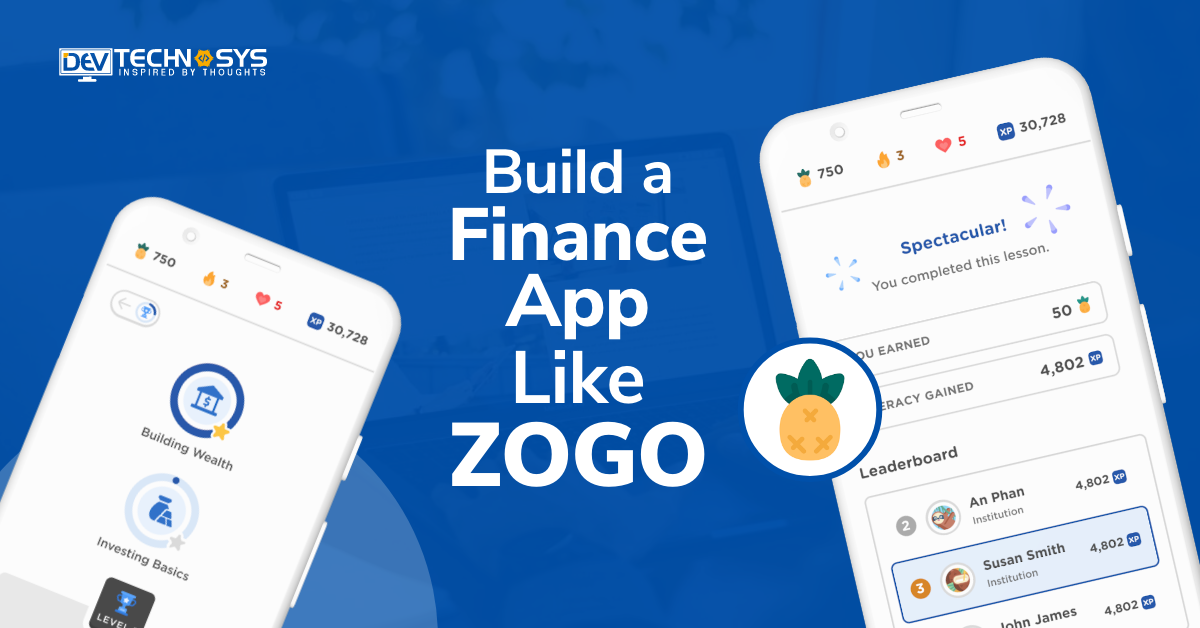Developing a mobile app has become one of the most sought-after business propositions currently. Most of the mobile app development services are working on their own mobile apps, especially in the field of on-demand app development, considering the success of various apps like Uber, Airbnb, etc. along with different other avenues.
But the question that you should ask before you venture into this field is why you wish to develop a mobile app. Do you actually want to get on the bandwagon of other business owners and entrepreneurs, or did you come across a particular problem that you think you can easily resolve?
Essentially, the answers to these questions will certainly determine whether your app will actually be successful or not.
However, if you have decided to proceed to develop your own successful mobile app, then here is a guide for you to develop your own successful app. Let’s look at this stepwise guide in detail.
Table of Contents
Current Market Stats of Mobile App

- With a 74 percent audience reach in January 2023, the YouTube mobile app came out on top. Gmail, an email platform provider, came in second with a 61 percent use reach.
- In the US, 59 percent of mobile audiences visited the social networking site Facebook. The social video platform TikTok reported a reach of about 35% throughout the study period.
- The predicted 299 billion global app downloads per year in 2023 represent an increase from the 247 billion global app downloads in 2020.
- In contrast, North America saw 12.1 billion mobile app downloads in 2018 and is expected to reach 15.2 billion downloads in 2023.
Essential Features to Integrate into Mobile App
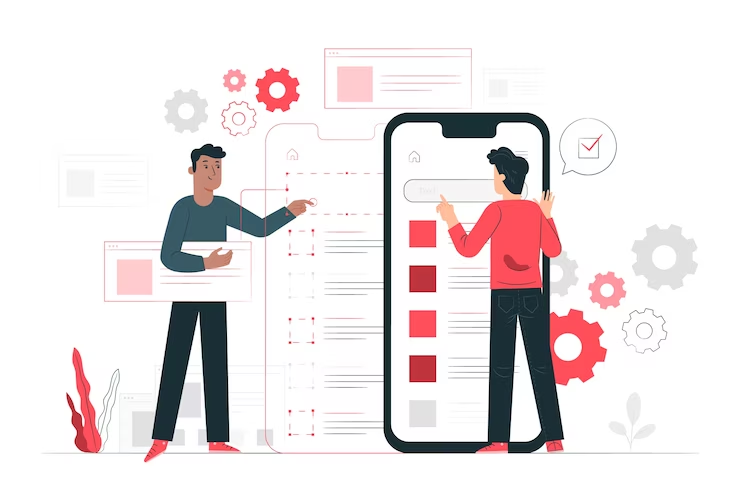
In this section, we will look into the essential app features that will enrich your mobile solution and provide a great user experience. So let’s have a look:
1. User-Friendly Interface
The user interface (UI) of your mobile app is the first thing users interact with when they download your app. Therefore, it is crucial to create a user-friendly interface that is easy to navigate and understand. A simple, intuitive, and aesthetically pleasing UI can make a significant difference in user engagement and retention.
2. Push Notifications
Push notifications are an effective way to keep users engaged with your app. They allow you to send timely and relevant updates, reminders, and promotions directly to users’ devices. However, it is important to use push notifications judiciously to avoid annoying your users.
3. Social Media Integration
Integrating your mobile app with social media platforms can help you reach a wider audience and increase user engagement. Social media integration allows users to log in to your app using their social media accounts, share their experiences, and invite friends to use your app.
4. Personalization
Personalization is a key feature that can enhance user engagement and retention. Users expect apps to provide them with personalized experiences tailored to their preferences and behavior.
By analyzing user data, you can create personalized recommendations, content, and promotions that keep users coming back to your app.
5. In-App Purchases
In-app purchases allow users to buy additional content or features within your app. This feature can be a significant source of revenue for your app.
However, it is important to ensure that in-app purchases are optional and not required to use the basic features of your app. To integrate this feature into your robust mobile app, you should hire dedicated developers who are well-versed in building apps.
6. Offline Access
Users may not always have access to a stable internet connection, especially when traveling. Providing offline access to certain features of your app can enhance the user experience and make your app more convenient to use.
7. Search Functionality
A search function allows users to quickly find what they are looking for within your app. This feature is particularly important for apps with large amounts of content or a wide range of features.
8. Ratings and Reviews
Ratings and reviews allow users to provide feedback on your app and share their experiences with others. This feature can help you improve your app and attract new users. However, it is important to monitor and respond to user reviews to maintain a positive reputation.
9. Analytics
Analytics allows you to track user behavior, engagement, and retention within your app. By analyzing user data, you can identify areas for improvement and optimize your app for better performance and user experience.
10. Security
Security is a critical feature that should not be overlooked. Your app should provide a secure environment for user data, transactions, and interactions.
Implementing secure login protocols, data encryption, and other security measures can protect your app and your users’ information from cyber threats.
How to Develop a Mobile App?
Now that you know the features, it is time to develop your own successful mobile app. However, it would be better to take mobile app development services that can provide you with amazing mobile app solutions.
Step 1: Define the Problem or Get an Idea
In case you have already defined the problem or obtained an app idea, then you can easily move to the next step. In case you haven’t, then read further.
If you wish to develop your own successful mobile app without having an app idea, then it is surely a disastrous decision. Before you actually start, you need to know the problem which you need to solve. And the problems are everywhere.
Most successful entrepreneurs solve problems in such a way that we could never have imagined. Whenever you look around, each product, as well as the service that you are utilizing, were all created to solve a particular problem. In case you wish to go from one place to another, you need a car. If you required a place to stay, you needed a hotel.
Hence, look for problems in your own daily life and make a list of each and every one of them. Once you have created a detailed and exhaustive list, then you can start thinking about how you can easily resolve any one of them or more and shortlist them, which makes the most sense to you.
Step 2. Validation or Identification of Requirement
When it comes to obtaining proof of existing demand for your app, validation is a must. You can easily validate your own app idea by utilizing the Keyword Planner tool of Google in order to search and look for the total number of interested people actually looking for what you are trying to do.
Also, you can easily create your own landing page that extensively highlights your entire app idea and then seeks user interest via email signup.
Step 3: Flow and Features
Through validation of the app idea, you obtain the result that you have got something that people actually wish to use. Hence, it is time to detail your product in a detailed document, or you can go for a wireframing tool.
Whenever you are putting your idea down on paper, you need to remember to be as detailed as possible. You should include the flow of how the actual user will be navigating the app, along with the different features that will be included. It will assist the mobile app developers for hire to understanding your overall expectations of yours clearly.
Step 4: Scrap Non-Essential Features
Once you have prepared the document detailing the flow and features, start to closely look at the features which can be removed. These are the non-essential features that do not offer core value to the app idea.
Do not ever build features in the initial version of the app, which is essentially what we call, “nice to have” features. They can always be added later as a part of an update. Essentially, this will assist you in keeping the initial cost of development down and reduce the time to market.
Step 5: Make Design a Priority
A lot of entrepreneurs often go for basic design and focus on merely developing an app which is wrong on principle. Design isn’t just about how exactly your app actually looks but how your user will experience it.
Hence, go for a Hybrid App Development Company in London that puts design, which includes graphics and user experience, first.
Step 6: Hire a Mobile App Development Company
The next step to developing your own successful mobile app is to look for a development company that has great experience in mobile application development, exquisite design talent, and an expert development team.
While hiring such a company, check its credibility, and the apps it has created. In case you have really liked any app from its portfolio, there is a major chance that it is the right one for your own app.
Step 7: Creating Developer Accounts
After the development of your app, you need to register for a developer account on different app stores in order to be able to sell your own app through these platforms.
Also, you have the available option of registering either as an individual or as a firm or company, in case you have already formed one.
Step 8: Analytics Integration
Through Analytics, you can easily track user engagement, downloads, and retention for your app. There are numerous tools that are essentially available for free as well as paid, which you can use for this purpose.
Step 9: Collect Feedback and Enhance
After your app goes live on the different app stores, you need to set the usage and behavior of the customers to provide you with insight into how to actually improve as well as enhance your app. Focus on user feedback and make regular enhancements.
Step 10: Updates
Since you have built the initial version with limited versions, it is time to evaluate and finally introduce the remaining features which were left out. In this case, feedback and analytics play a key role in deciding which features are relevant.
Technology Stack for Mobile App Development
The technology stack is the most important part of any mobile app development. So, below is the crucial tech stack to develop your own successful mobile app.
Native Apps:
- a) iOS: Swift or Objective-C, Xcode, iOS SDK, CocoaPods
- b) Android: Java or Kotlin, Android Studio, Android SDK, Gradle
Hybrid Apps:
- a) React Native: JavaScript, React, Redux, Node.js, NPM, Expo
- b) Flutter: Dart, Flutter SDK, Android Studio or IntelliJ IDEA, Visual Studio Code
Progressive Web Apps (PWA):
- a) JavaScript, HTML, CSS, PWA Studio, React, Angular, Vue.js
Cross-Platform Apps:
- a) Xamarin: C#, Visual Studio, Xamarin Forms, Xamarin Test Cloud
- b) PhoneGap: HTML, CSS, JavaScript, PhoneGap Build
Backend Development:
- a) Node.js: JavaScript, Express, MongoDB, Socket.io
- b) PHP: Laravel, Symfony, CodeIgniter, Yii
Conclusion
All the above-mentioned steps do not guarantee you a successful mobile app but rather act as a guideline to build one in the most effective manner. Once you are ready, to begin with, the development part, you must also know that developing the mobile app is the easiest part.
The toughest part is getting the customers. However, taking assistance from a reputed mobile app development company would be helpful who can build a robust mobile app and provide amazing business solutions.
What is the Cost to Develop a Mobile App?
The cost to develop your own successful mobile app depends on various factors. For example, app complexity, features and functionalities, location of developers, app design, platform type and many more. However, the cost estimation for a basic mobile will be around $25000-$35000, while the complex mobile app with advanced features will be around $40000-$50000.
What Makes an App Successful?
A successful app combines three aspects in a smart way: market, user, and the product itself. All these factors need to work together to give users a unique value, great usability, and good performance. Accessibility is the last but not least key feature of a successful mobile app.
How Much Time Does it Take to Develop Your Own Successful Mobile App?
The time to build a successful mobile app depends on the factors affecting it. However, building a basic mobile app it will take 3-5 months and it can go up to 7-9 months depending on the complexity of the app and its functionality.

